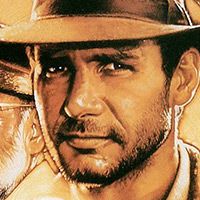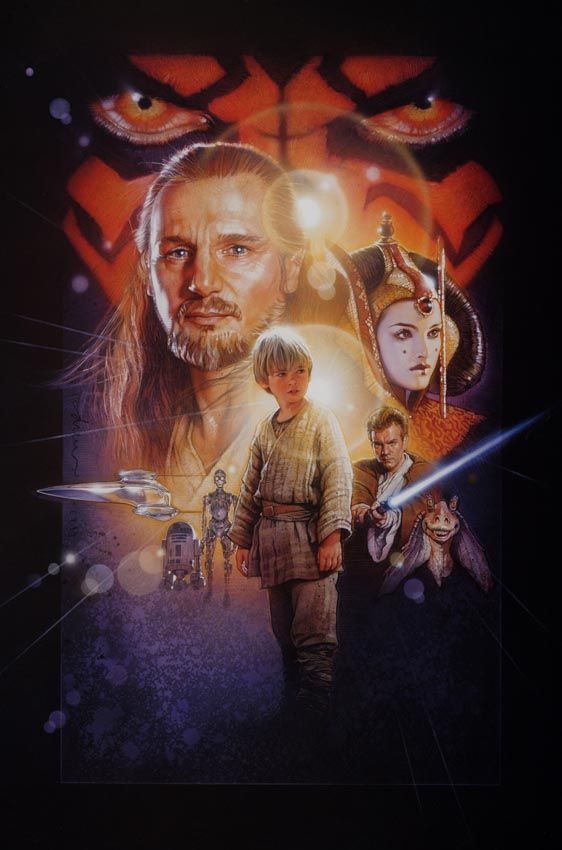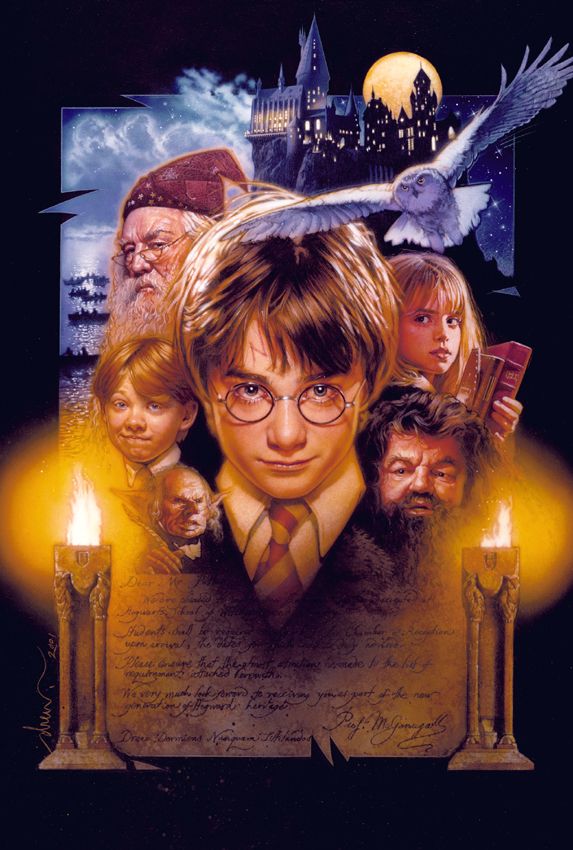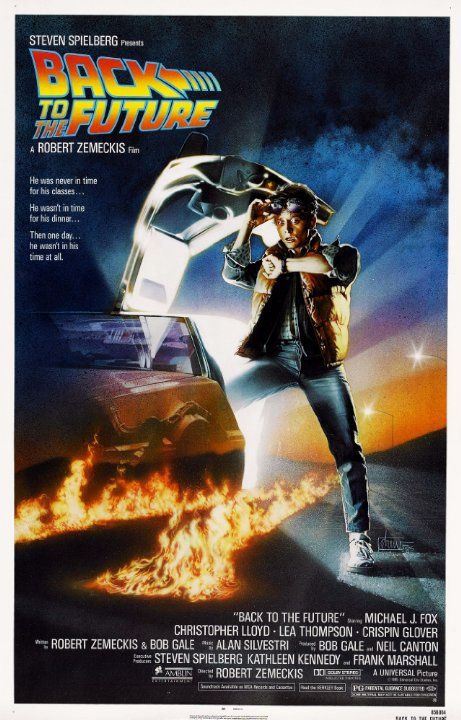Drew Struzan is the artist who distilled some of the most beloved films of all time down to the kind of potent and enticing imagery that simultaneously fueled fantasy and drove tickets sales, all while putting his own distinct creative stamp on it -- and now he’s being honored for his work.
After cementing his reputation as a movie poster artist of singular vision, particularly with a breakthrough work on the now-famous “circus”-style Star Wars re-release poster in 1978, Struzan spent the ensuring decades emerging as one of the most admired masters of his craft in the history of Hollywood. As a result, the artist receives the prestigious Saul Bass Award (named for another brilliant poster art visionary) at The Hollywood Reporter's Key Art Awards powered by the CLIO Awards as part of the gala ceremony honoring Hollywood’s promotional artworks on Oct. 23.
Stuzan’s dreamed up iconic imagery created to promote the fantastical films of frequent collaborators including George Lucas (the ‘90s Star Wars Special Edition Trilogy posters, The Phantom Menace, Attack of the Clones and Revenge of the Sith, countless Star Wars licensing works), Steven Spielberg (E.T.: The Extraterrestrial, all four Indiana Jones films, Hook), Robert Zemeckis (the Back to the Future trilogy), Ridley Scott (Blade Runner) John Carpenter (Big Trouble In Little China, The Thing), Frank Darabont (The Shawshank Redemption, The Green Mile, The Walking Dead), Guillermo del Toro (the Hellboy films, Pan’s Labyrinth), Sylvester Stallone (First Blood, Rocky IV), Chris Columbus (the first two Harry Potter films) the Muppets and more genre classics like The Goonies, as well as some of the most memorable films (the Police Academy, Cannonball Run and Flintstones films, Harry and the Hendersons, Better Off Dead, Hocus Pocus) of their eras – 200-plus movie titles in all, not to mention his distinctive early album cover work like Alice Cooper’s Welcome to My Nightmare, and latter-day comic book art like the cover of Action Comics #800.
Struzan spoke with Spinoff Online a few days before the big celebration and found him both reflective on his achievements and, after a medical hiatus, eager to get back to work creating the images that movie dreams are made of again.
Spinoff Online: Congratulations on the Saul Bass Award distinction. What did it mean to you when you found out you were going to receive the honor?
Drew Struzan: I don’t know what it means to me. What can I say? The classic introverted artist, you know – I do all my thinking at home alone. I paint my pictures and they go out into the world. I’m happiest when the painting's done and I did a good job. [Laughs] An award? I didn’t enter a contest. They just, after 45 years, decided I did okay, I guess. I don’t know. I suppose in a subtle way, I’m kind of happy that they recognized I’ve been making the effort. I'm kind of a dinosaur, you know. Who else are they going to give it to? I’m the last guy standing here. I'm confused about it. I don’t know what to think. It’s nothing I’m pursuing.
How do you feel to see that throughout your career you’ve garnered all these admirers, that your work has certainly stood the test of time and really stuck with people. For example, a regular basis, I see people recreating the Back to the Future poster image that you created in their photos on social media. What does it mean to you to know that you have had a real impact, and you’ve created a legacy?
Have I?
I believe you have!
It’s kind of like when they’re making that documentary about me, the director did a lot of interviewing and he kept asking the question starting with, "How do you feel?" I don’t know how I feel. I’m kind of lonely and broken-hearted and questioning the reason for my existence. That’s how I really feel. How do I feel about this? It’s what I wanted to do, but not in this way. I wanted to be an artist to do something beautiful and nice and loving and kind and peaceful for the world. And make it a prettier place, simply. And I wanted to make people happy around me. But I guess to some point that it happened, so I fulfilled my purpose in life. So that’s how I feel about it. I’d like to keep doing some more because somewhere out there there’s more thing to do, and if I can prove to make people happier then, I feel pleased. It’s not complicated, I suppose. Or is it average or simple? I don’t know, I guess I want to make people happy. That’s all I want, and this tells me that I made some of them happy, some of the time. So, for that I am pleased.
You’ve certainly accomplished that. Tell me a little bit about the very successful collaborations you’ve had: we’ll start with Lucasfilm and George Lucas. Do you have any insight as to why your artistic vision kind of clicked with what George was creating in Star Wars?
Nope, never told me! [Laughs] I don’t know, maybe it’s the unspoken things. I was just watching a TED presentation and the girl was talking about how the systems come to honor the people and they're extroverted. Because we can work together and get it done. And she was talking about introverts and their insightful power when they’re alone. And that’s when they come up with great ideas. And to that end, George Lucas and myself have very, very similar personalities. We’re both very quiet, very introverted. And I also asked him once, "Why do you always use illustrations?" Not me in particular, but for all his movies he only uses illustrations. He’s never used photography. And it was because of the way he sees his films. They're more beautiful, more exciting, more fun. Painting gives you more room to express, and that’s how he feels about his movies. So just a photograph isn’t sufficient. It’s too real. Anything’s more about the cerebral and the heartfelt and the emotion. I think because I feel that way, he feels the same way, whether or not I can explain that feeling, so he always uses them. Once I pleased him, he also happens to be extremely loyal character, so once you make him happy he just sticks with you, I guess. And we get along really well.
A lot of your more famous work has been connected with films and projects that have a highly imaginative content – the works of Lucas, Steven Spielberg, Robert Zemeckis, and John Carpenter. Did you always find that your artwork was kind of in tune with that area, or that you had an affinity for that kind of thing, or did you discover it through the movie poster work that you were doing?
I had no affinity, nor did I discover it. I’m a poor, working stiff, and if a job comes my way, I’m happy to take it. [Laughs] I don’t know about that. I think part of it was the time. It started in the '80s and worked through to today. The movies changed, and I was just here waiting for work: so that’s what came my way, so that’s what I did. I’m happy to have done it. I suppose those directors you mentioned are very creative themselves, so they have something to say that has touched the hearts of the audience. So I get to know the directors, I see what they’re doing. It’s more artful. It’s more -- I don’t know: It’s more emotional. It’s not just heavy-handed war movies, but it’s about people and life and hope and truth and fantasy. That’s why [I paint]: it gives you something richer to deal with. So it makes my job more fun and easier because it is creative and inventive, and all those guys are of that same thought. I think movies tended to go that way for the last number of decades. It’s made us all kinds of happy. I think it’s just all mixed up together here. I don’t know that there’s any special decision making with regard to what I get to do. That’s something I didn’t plan. I just fell into it because of the style at the time, I guess.
One key factor for any movie poster artist, I would imagine, is the ability to do likenesses. Was that an innate skill that you had early on, or is that something you developed -- that ability to really capture somebody – their spirit as much as an accurate depiction of them?
Well, I always answer that with a Groucho Marx expression, you know: I don’t stop painting until the painting sings and dances. So, until it speaks back to me of the way I feel about it, I keep at it. That’s just an innate feeling that I have. When it’s beautiful and loving and true, then I know it’s a good job. People always say you make them look better than they really look, and yet it looks more like them than the photograph you worked from. I don’t know what they’re trying to say, nor do I know what you’re trying to say, I just -- I went to school. I learned my anatomy, and I did millions of portraits to learn how to do it. But the important thing is I feel when I think it had something good to say, and I keep working on it until it does that. So that’s an innate personality thing, I suppose. Other people go to school and learn how to draw and paint and do portraiture. But for some reason people think mine is different. I couldn’t tell you what it is, anything more than it’s just my feeling. So you can’t draw like me until you become me, I suppose.
What’s been fun about those working relationships? Two that leap to my mind are Frank Darabont and Guillermo del Toro, people who became good friends of yours in the process of your professional collaboration. What was the treat for you in all of that?
You answered your own question: It’s a treat. I haven’t had that many friends through my life. I spend all my time working and alone and introverted, in my deep thoughts. I’m not a party animal, so I never had that many friends, especially as a kid. People didn’t understand that all I wanted to do was draw and paint. But, I mean, you picked the two that are dear friends, Frank and Guillermo. Frank had ordered a limited edition piece of one of my artworks and when he received it, we didn’t know each other at that point, but when he got it, he got so excited. He called Steven Spielberg and he got my phone number and called me right away to say thank you for how excited he was and how wonderful the picture was. We just started talking on the phone, believe it or not, and we got along so well, he says, "Can I come over?" So he got in the car and drove over and we became best friends. We understand each other. Without working, we just have the same heart and the same mind.
Guillermo is exactly the same way. When he came over, we became close friends. We don’t have to explain ourselves when we speak. We understand what each other mean. Therefore, I think that’s the meaning of a friend, isn’t it? They have the same heart, and the same spirit. Our souls come together very quickly. And when we work on projects, usually I can do 50 and 60 comprehensive designs for a poster before I can start to please somebody. I think on Pan’s Labyrinth, I saw the move the night before with Guillermo. He came over the next morning, and we were going to discuss what we wanted to do. And he goes, "Okay, I have an idea," and I said, "I have an idea too!" A quick 30 seconds through the sketch, he says, "Okay – that’s it!" And that’s what I wound up painting, and that was the poster. We were of the same mind, from the first second on.
I’m the same way with Frank. We just get along famously. So, to have a friend, to have someone that understands your heart and your mind, and we can talk freely about the good, the bad, and the ugly, is the greatest thing. It was an experience I didn’t have as a child. But to have it this late in life, I found out what people are talking about. Good friends are the best thing going.
You spoke earlier about the degree of solitude that comes with your work and the introverted nature of it. How have you handled it when you go out to Comic Con and autograph shows, and you meet these legions of people that want to meet you and have you sign something? Is that an odd situation for you to find yourself in?
Well, wouldn’t that be odd for anybody? I have learned how to appreciate the kindness they’re showing and to enjoy the thing right along with them. So, I mean, if I had a purpose in life, it’s trying to make other people happy. And I understand why they’re there, and me being there makes them happy. Yeah, I think that’s very peculiar. Why would that be true? But I go with it. I’m happy to do it, and I spend hours and hours signing signatures and just talking to people because, they seem to enjoy it. So don’t ask me why. I just learned how to have fun with it as well as they did. So it doesn’t bother me in the least.
I won’t ask you for a favorite work because I know that’s probably impossible to answer, but I’ll ask you this: Was there was one work that you really struggled with that by the time you solved whatever the problem was, you were very happy with? Was there one like that that posed a real daunting challenge that you happily solved eventually?
That’s exactly what happens with every piece. Every piece is a challenge. Every piece has to be a new and creative, invention. They’re all tough, and I work on each one until it gets to be as best as it can be. I enjoy the process. I would hate to have to do the same thing every day. And I enjoy the challenge and the threat and the fear and all the things that go with it. So it’s a delight, and I go through that with every picture I do. There’s no one that stands out. They’re all that way.
What’s sort of front and center on your art board these days? Is there anything that’s consuming most of your time?
Yeah, these interviews. [Laughs] Not much at all. I could explain it, but you wouldn’t find it very fun. I haven’t painted in a while, or done an illustration in a long time, because I’ve been so sick of recent. The last year and a half have been very, very, very hard physically for me. So I haven’t done a whole lot of painting and drawing. But, I’ll get back to it. I got things on the table ready to go. I went to the doctor for the first time in my life, and they said everything’s absolutely fine. Except for the one thing, I have extremely high blood pressure. I’ll fade out, croak if I do anything strenuous. But they gave me a pill. And I’m on my third pill. And I feel better already. So I’ll be back to it. I just haven’t done anything recently.
I’m hoping you bounce back very quickly and you can get back to work. I’ve admired your work for a long time and I know our audience will be really pleased to hear from you.
I didn’t say anything, particularly yet. As I would say, I’m a painter not a talker. So I hope there’s something you can make out of that. Give all my best to all your people out there. The reason I do it is for them. I’m just trying to make you happy.




